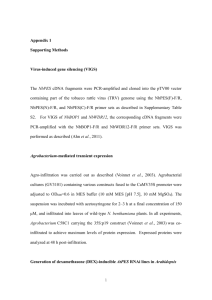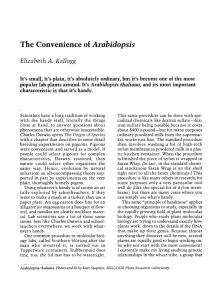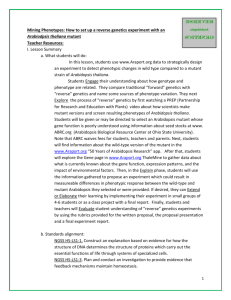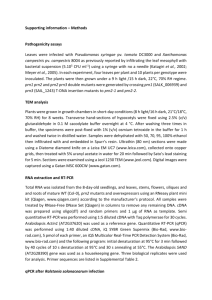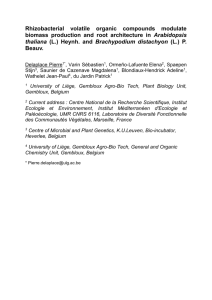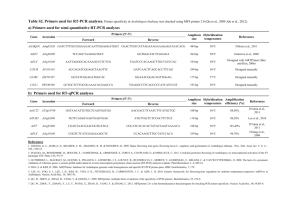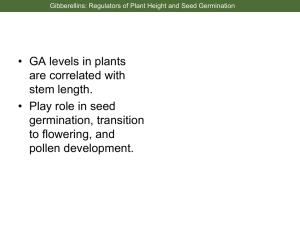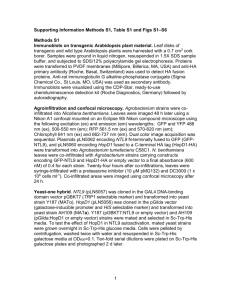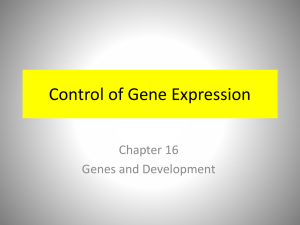Meghan, Jack, Callie, Noah, and Peyton 2.12.12 3 Arabidopis
advertisement
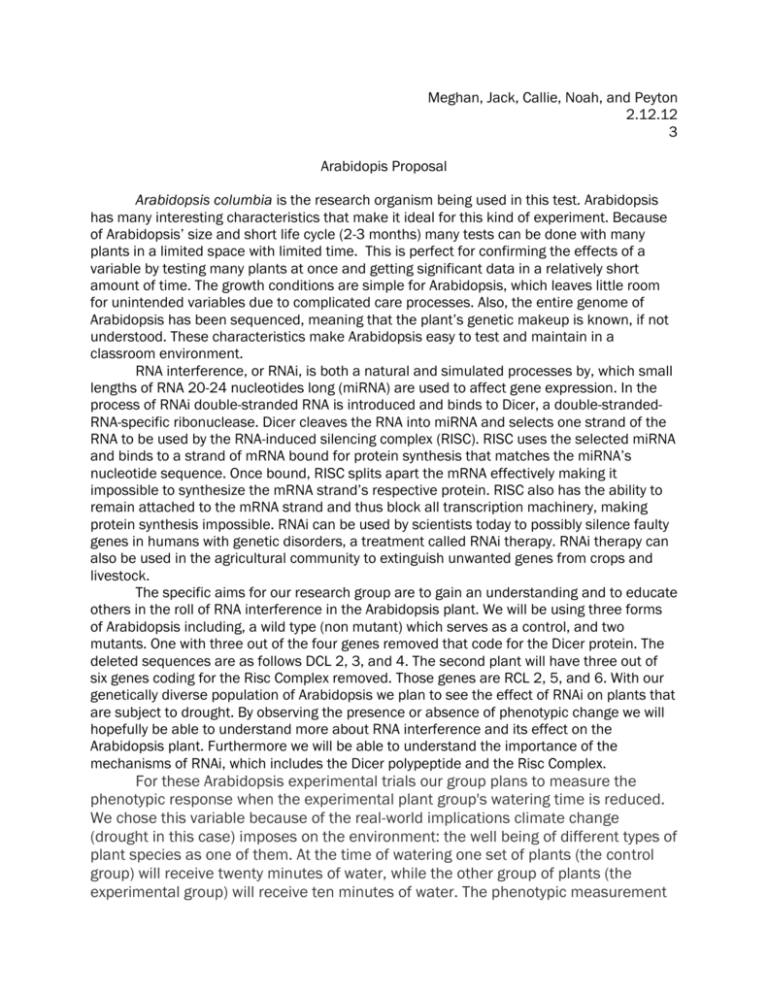
Meghan, Jack, Callie, Noah, and Peyton 2.12.12 3 Arabidopis Proposal Arabidopsis columbia is the research organism being used in this test. Arabidopsis has many interesting characteristics that make it ideal for this kind of experiment. Because of Arabidopsis’ size and short life cycle (2-3 months) many tests can be done with many plants in a limited space with limited time. This is perfect for confirming the effects of a variable by testing many plants at once and getting significant data in a relatively short amount of time. The growth conditions are simple for Arabidopsis, which leaves little room for unintended variables due to complicated care processes. Also, the entire genome of Arabidopsis has been sequenced, meaning that the plant’s genetic makeup is known, if not understood. These characteristics make Arabidopsis easy to test and maintain in a classroom environment. RNA interference, or RNAi, is both a natural and simulated processes by, which small lengths of RNA 20-24 nucleotides long (miRNA) are used to affect gene expression. In the process of RNAi double-stranded RNA is introduced and binds to Dicer, a double-strandedRNA-specific ribonuclease. Dicer cleaves the RNA into miRNA and selects one strand of the RNA to be used by the RNA-induced silencing complex (RISC). RISC uses the selected miRNA and binds to a strand of mRNA bound for protein synthesis that matches the miRNA’s nucleotide sequence. Once bound, RISC splits apart the mRNA effectively making it impossible to synthesize the mRNA strand’s respective protein. RISC also has the ability to remain attached to the mRNA strand and thus block all transcription machinery, making protein synthesis impossible. RNAi can be used by scientists today to possibly silence faulty genes in humans with genetic disorders, a treatment called RNAi therapy. RNAi therapy can also be used in the agricultural community to extinguish unwanted genes from crops and livestock. The specific aims for our research group are to gain an understanding and to educate others in the roll of RNA interference in the Arabidopsis plant. We will be using three forms of Arabidopsis including, a wild type (non mutant) which serves as a control, and two mutants. One with three out of the four genes removed that code for the Dicer protein. The deleted sequences are as follows DCL 2, 3, and 4. The second plant will have three out of six genes coding for the Risc Complex removed. Those genes are RCL 2, 5, and 6. With our genetically diverse population of Arabidopsis we plan to see the effect of RNAi on plants that are subject to drought. By observing the presence or absence of phenotypic change we will hopefully be able to understand more about RNA interference and its effect on the Arabidopsis plant. Furthermore we will be able to understand the importance of the mechanisms of RNAi, which includes the Dicer polypeptide and the Risc Complex. For these Arabidopsis experimental trials our group plans to measure the phenotypic response when the experimental plant group's watering time is reduced. We chose this variable because of the real-world implications climate change (drought in this case) imposes on the environment: the well being of different types of plant species as one of them. At the time of watering one set of plants (the control group) will receive twenty minutes of water, while the other group of plants (the experimental group) will receive ten minutes of water. The phenotypic measurement recorded on the Arabidopsis plants will consist of the height of the plant, the distance from the soil to the tallest part of the plant, and the largest diameter of the plant, measured in centimeters. These two phenotypic variables measured will provide an accurate depiction on the well being of the plants and how our variable implemented, drought, affects them. This experiment shows how the changes in water will affect the growth of the plant and how that growth will affect overall health of the plant. Very often the environment will change the amount of moisture a plant will be able to obtain so by testing the effects of a drought on a plant we can see what DNA changes are made to make the plant capable of surviving in such conditions.


